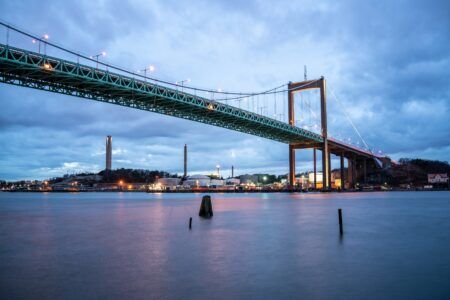A new report from the Thames Estuary Growth Board has revealed how the River Thames in south-east England has enormous and untapped potential for handling freight. If fulfilled, the report claimed, “it would deliver new jobs, ease congestion and reduce air pollution.”
The Thames Estuary Growth Board is the strategic body overseeing an emerging action plan to promote long-term transformation and good growth in the Thames Estuary. The new report provides recommendations on how the River Thames could be used for light freight transportation.
The Light Freight on the River Thames report was commissioned by the Thames Estuary Growth Board and the Port of London Authority, and delivered by WSP, one of the world’s leading engineering professional services consultancies. Its purposes are to provide the framework for a viable light freight solution on the River Thames, demonstrate the benefits for both business and the wider public, and set out clear next steps.
Perry Glading, deputy chair of the Thames Estuary Growth Board and lead on light freight, said, “This is an opportunity we cannot afford to miss, as we continue to strive toward net zero and deliver the world’s cleanest, greenest Estuary. We are delighted with the work that WSP has put into creating the models and recommendations and look forward to putting them into action.”
The Thames Estuary Growth Board will now share the report with business to develop the case for investment and all levels of government to develop policy support.
According to the board, the challenge for any proposed river freight model is that it needs to be a viable option for supply chains for it to be adopted by business. This report finds that the River Thames can be better used for large-scale light freight, such as deliveries of parcels, food, beverages, and retail goods. Handling just 3% of the 700 million parcels delivered in London annually could make river freight competitive with traditional road freight.The report sets out a number of recommendations including the establishment of a coordinating body to help facilitate riverside developments; showing how operators can work seamlessly to attract customers; supporting the development of proof-of-concept trials, including those currently underway; and developing detailed options for pier development that minimize costs and maximize market access.
Light river freight is already showing signs of resurgence, with the drive of organizations such as the Port of London Authority (PLA) and the use of the river for parcel trade (by DHL, for example). This generates enormous environmental and social benefits whilst presenting an opportunity to push forward innovation through new marine technologies in green power such as hydrogen and electrical propulsion.Moving freight onto the river is a key part of the Thames Estuary Growth Board’s “Green Blue Workplan”, which describes practical steps to realize the huge potential of the Thames Estuary. By driving a modal shift from road to river, the board aims to draw in new investment opportunities, supporting its position as a strategic investment partner to government, and driving levelling up across the Estuary.James Trimmer, director of planning and environment for the Port of London Authority, added, “The Thames is home to the UK’s largest port and inland waterway and provides a sustainable and reliable, congestion free highway into the heart of the capital. The WSP report shows how ‘joining the dots’ between port and consumer is a very real possibility and one which will deliver manifest environmental and wider social benefits. At the PLA we’re working daily to turn this potential into reality.”
To read the full Light Freight on the River Thames’ feasibility study, visit: https://thamesestuary.org.uk/light-freight/





